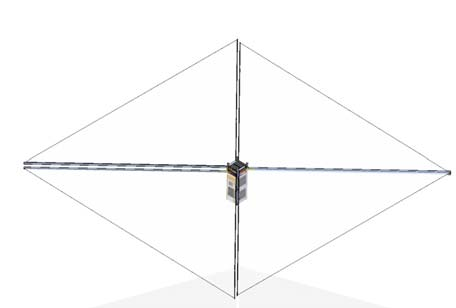
CanX-7 (Canadian Advanced Nanospace eXperiment-7) – a de-orbiting nanosatellite demonstration mission – has successfully de-orbited a 3.5kg nanosatellite using drag sail technology. The project – based out of UTIAS/SFL (University of Toronto Institute for Aerospace Studies/Space Flight Laboratory) – was designed to reduce the time retired small satellites spend in orbit as space debris.
CanX-7 burned up in Earth’s atmosphere five years after drag sail deployment and approximately 178 years before it would have without any deorbit technology. CanX-7 is the first Canadian satellite to be independently deorbited by commanded atmospheric re-entry. The deorbiting technology is expected to allow nano- and microsatellites to be launched into a wider range of orbits than would be possible if natural orbital decay were to be relied upon.
CanX-7 – a 10x10x34cm nanosatellite built by SFL – was launched in September 2016 with a two-fold mission of demonstrating Automatic Dependent Surveillance – Broadcast (ADS-B) message collection from space for global aircraft situational awareness, and then testing the de-orbiting technology developed by SFL. The satellite deployed the four drag sails – each about one square meter in area – in May of 2017, with the intent of decreasing the ballistic coefficient of the nanosatellite and using atmospheric drag to accelerate orbital decay. Upon deployment, an almost immediate change in altitude decay rate was observed.
“The SFL drag sail technology developed for nano- and micro-satellites is among the only commercially viable de-orbiting devices available today, aside from propulsion,” said SFL Director Dr. Robert E. Zee. “The drag sails performed better than designed, deorbiting CanX-7 in far less time than the maximum 25-year target recommended by the Inter-Agency Space Debris Coordination Committee (IADC).”
Can-X was funded by Defence Research and Development Canada, the Natural Sciences and Engineering Research Council, COM DEV Ltd., and the Canadian Space Agency.
“Orbital debris is a big concern for the space industry, and the passive de-orbit technology demonstrated on CanX-7 is an advantageous solution for nano- and microsatellites,” said SFL’s CanX-7 Mission Manager, Brad Cotten. “The mission verified that SFL’s lightweight drag sail technology is a more cost-effective and less complex method for deorbiting smaller satellites than traditional propulsion techniques.”
